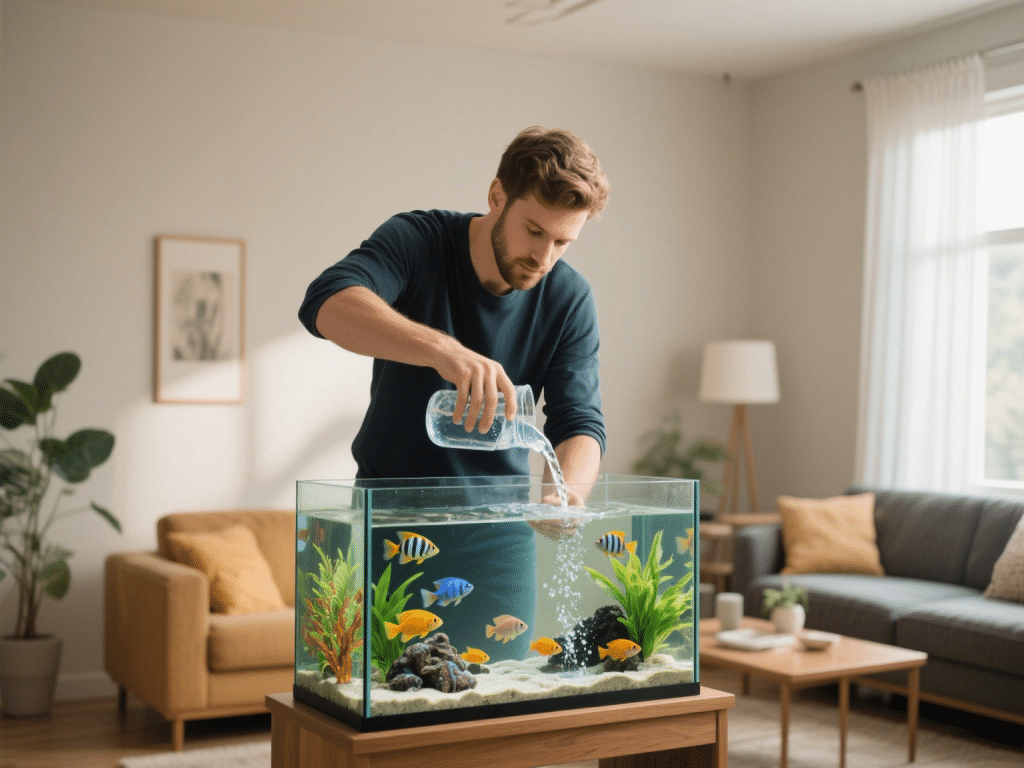
Introduction
Proper maintenance is vital for a healthy aquarium. Beginners often underestimate the tasks needed for stable water parameters and vibrant aquatic life. This guide provides a clear, step-by-step maintenance schedule and practical tips for novice aquarists.
1. Daily Tasks
Observation: Spend a few minutes checking fish behavior—look for signs of stress, abnormal swimming, or disease (clamped fins, spots).
Feeding: Feed small portions once or twice daily; remove uneaten food within five minutes to prevent decay.
Equipment Check: Ensure filter, heater, and lights are functioning properly; listen for unusual noises and check water temperature.
2. Weekly Tasks
Water Testing: Use a test kit to measure ammonia, nitrite, nitrate, and pH. Ideal levels: ammonia & nitrite at 0 ppm; nitrate < 20 ppm. pH should align with species requirements.
Partial Water Change: Replace 10–20% of tank water with dechlorinated, temperature-matched water. Use a gravel vacuum to clean substrate and remove debris.
Glass Cleaning: Use an algae scraper or magnetic cleaner to remove algae from tank walls.
Filter Inspection: Rinse filter media in tank water (not tap water) to remove debris; replace cartridges or media per manufacturer guidelines.
3. Biweekly Tasks
Decor & Plant Maintenance: Trim live plants, clean artificial decorations, and rearrange for optimal aesthetics and algae prevention.
Check Equipment Wear: Inspect heater for consistent heating, examine tubing for cracks, and test air stones and pumps. Replace worn parts.
4. Monthly Tasks
Deep Filter Cleaning: Disassemble the filter; gently scrub impeller, intake, and housing with tank water. Replace filter media if aged or clogged.
Substrate Cleaning: Thoroughly vacuum gravel or sand, focusing on under-heavy areas where debris accumulates.
Lighting Assessment: Check bulbs for reduced output. Replace fluorescent or LED bulbs yearly to maintain plant photosynthesis and color rendition.
Record Parameters: Log water test results to identify trends and catch issues early.
5. Quarterly Tasks
Media Replacement: Replace activated carbon, chemical resins, or other media in the filter according to usage.
Equipment Calibration: Verify heater calibration with an accurate aquarium thermometer; adjust if necessary.
Inspect Hardscape: Examine rocks and driftwood for sharp edges or algae; clean or replace as needed for fish safety.
6. Tips for Consistency
Maintenance Calendar: Use a calendar or smartphone app to schedule and track tasks.
Quality Equipment: Invest in reliable filters and heaters to maintain consistent conditions.
Avoid Overcrowding: Keep fish stocking levels modest; overcrowding leads to rapid ammonia spikes.
Quarantine New Fish: Use a separate tank to observe new fish for diseases before adding to the main aquarium.
Conclusion
Adhering to a structured maintenance schedule ensures a stable, healthy fish tank. By dedicating time to daily observations and weekly, monthly, and quarterly tasks, you foster a thriving aquatic ecosystem. Consistency, observation, and proper record-keeping are key to long-term aquarium success.